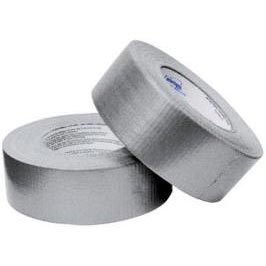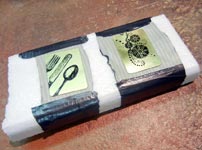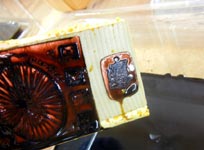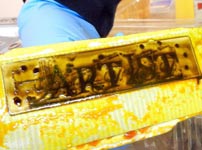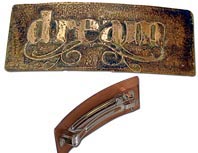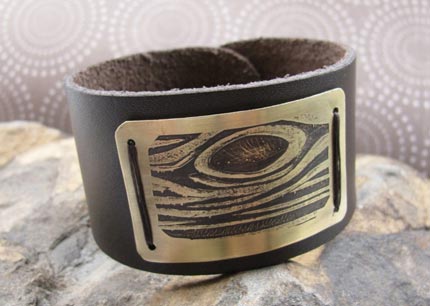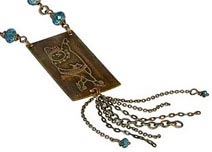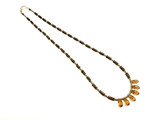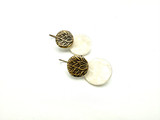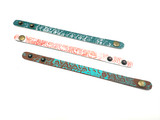Metal Etching 101
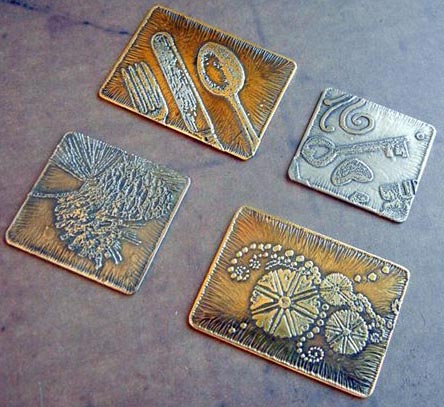 Etching is a method of using chemicals to cut a design or pattern into a metal surface. Etching your own designs into metal is easier than it may sound, and it can be a fun and rewarding way to make your own jewelry! Learn the basics of how to choose your metals, choose your etchants, create or transfer your images with resists, and complete the etching process. Discover how to make a float boat for suspending your designs in etchant — plus find basic etching safety precautions, design considerations, and free projects. You may also want to shop our etching chemicals & supplies, including our exclusive etching tool kit. Etching is a method of using chemicals to cut a design or pattern into a metal surface. Etching your own designs into metal is easier than it may sound, and it can be a fun and rewarding way to make your own jewelry! Learn the basics of how to choose your metals, choose your etchants, create or transfer your images with resists, and complete the etching process. Discover how to make a float boat for suspending your designs in etchant — plus find basic etching safety precautions, design considerations, and free projects. You may also want to shop our etching chemicals & supplies, including our exclusive etching tool kit. What Metals can be Etched?Because chemical etching actually cuts into the surface of the metal, you want to make sure your plate or sheet of metal is thick enough to hold an etched design well. We recommend using 22-gauge or thicker metal sheet and pre-cut metal blanks. Options we carry that will work with ferric chloride (see next section) include:
24-gauge sheet metal and 24-gauge pre-cut blankswill also work — just be sure to leave 24-gauge items in the chemical bath for less time than you would a thicker metal. See all gauges of metal blanks for more options. | |||||||||
Choosing the Right Etchant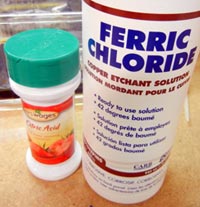 Etchant is the chemical (or mixture of chemicals) that you'll use to cut into unprotected parts of your metal and create the finished etched design. It's important to match your metal with an appropriate etchant, because the same metal will react differently to different chemicals (and vice versa). Etchant is the chemical (or mixture of chemicals) that you'll use to cut into unprotected parts of your metal and create the finished etched design. It's important to match your metal with an appropriate etchant, because the same metal will react differently to different chemicals (and vice versa).
| |||||||||
Types of ResistsA resist is what you use to protect certain parts of your metal from the etchant. Resists are typically inks (and tapes). You will apply a design or pattern to the metal with your resist. Then, when you dip your metal into the chemical bath, the covered areas will "resist" being eaten away. Those covered areas will be the high points of your design once the etching process is complete. Different artisans use different resists, and different resists work better with different aesthetic styles and methods — for example using rubber stamps, making a photo transfer, drawing by hand, etc. With practice and experimentation you'll figure out which mediums and methods you prefer, too. Resists that work on copper, brass, and nickel silver include:
| |||||||||
Etching Tutorials & ProjectsUse our blog post below to take you through the full process of etching a design into metal — including the innovative use of a "float boat" instead of tape to suspend your designs in the etchant! Find more helpful hints in our safety precautions and design considerations. Get inspired with free projects. | |||||||||
| For an illustrated step-by-step guide that's easy to print, see our Metal Etching 101 PDF. | |||||||||
Oct 26th 2021
Our Bead Blog
-
Edgy Elegance Necklace
Mar 22nd 2024Created by: Guest Designer Deb FlorosSuggested Supplies 1 #20-111-204 TOHO Glass Seed Bead, Size 11
-
Elegant Button Earrings
Mar 22nd 2024Created by: Guest Designer Deb FlorosSuggested Supplies 1 #27-841-042-50 Beadalon Bead Bumper, 1.5m
-
Abstract Painted Cuffs
Feb 26th 2024Created by: Guest Designer Deb FlorosSuggested Supplies 1 #51-810-05-17 Leather Cuff Bracelet, 1/2"












